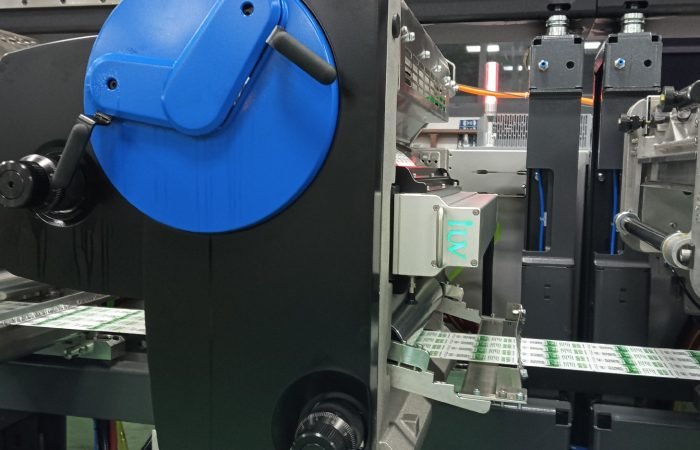UV LED curing systems have transformed printing processes across label, flexo, offset, and narrow web applications. While these energy-efficient systems eliminate mercury lamps and reduce heat generation, they bring unique operational challenges. Let’s break down frequent issues and practical fixes without technical jargon.
Incomplete Curing Patterns
Uneven curing plagues operators using UV inks on heat-sensitive substrates like thin films or specialty labels. Check three factors first:
- LED array alignment relative to substrate width (critical for narrow web presses)
- Reflector cleanliness – dust accumulation scatters UV light
- Ink layer thickness exceeding system’s irradiance capacity
For flexo printers running stretchable films, consider hybrid curing – combine LED modules with strategic infrared zones to maintain ink viscosity during high-speed runs.
Edge Curing Deficiencies
When label printers notice uncured edges on pressure-sensitive materials, it’s often a spectral mismatch. UV LED peak wavelengths must align with photoinitiators in inks. Newer pigment formulations require 385-405nm range. Simple test: apply cured ink sample to acetone-soaked cloth. If color transfers after 20 wipes, revisit your ink supplier’s spectral specs.
Web Temperature Fluctuations
While LEDs run cooler than traditional systems, improper heat sinking in high-throughput offset presses can warp plates. Monitor:
- Cooling fan RPM consistency
- Ambient temperature near ink stations
- Substrate dwell time under arrays
Narrow web converters often benefit from modular LED setups – add/remove units based on substrate thermal limits without overhauling entire curing tunnels.
Adhesion Failures Post-Curing
When UV-cured inks peel off polypropylene or metallic surfaces, low-intensity secondary curing might help. Install a lower-power LED array after main curing station to address oxygen inhibition – this gradual approach improves crosslinking without scorching sensitive materials. For embossed packaging stocks, adjust lamp-substrate distance dynamically using sensor-guided height actuators.
Ink Gloss Variability
Gloss inconsistencies in coated label stocks often trace to uneven irradiance. Use handheld radiometers monthly to map intensity across web width. If center regions show 15% higher readings than edges, replace degraded LED lenses or install beam-homogenizing optics. Rotating reflector systems (common in newer flexo units) prevent directional curing artifacts.
LED Lifespan Discrepancies
Premature diode degradation usually stems from voltage spikes rather than usage hours. Install surge protectors specifically designed for high-frequency LED drivers. For operations running 24/5 schedules, implement pulsed operation mode – cycling arrays at 90% power for 45 seconds followed by 10-second rests extends diode longevity by 18-22% based on recent press-side trials.
Color Shift in Overprint Applications
When CMYK layers cured under LEDs exhibit metamerism, check photoinitiator concentrations. Benzophenone-based initiators sometimes react differently under narrow-spectrum UV. Switch to acylphosphine oxide blends for better color stability. In multi-pass digital label printing, program separate intensity profiles for each ink layer – higher energy for magenta/cyan, reduced exposure for yellow/black.
Interference with RFID/Wet Glue Applications
Printers integrating smart labels often face RFID antenna damage from UV exposure. Two solutions:
- Install UV-blocking dichroic filters above antenna zones
- Program curing arrays to skip activation over chip locations using print-to-cure registration systems
For carton manufacturers using UV-cured inks with aqueous coatings, ensure complete water evaporation before ink curing – residual moisture creates hazing.
Retrofitting Legacy Presses
Converting conventional flexo presses to UV LED? Address these often-overlooked factors:
- Power supply harmonics interfering with press controls (install line reactors)
- IR emissions from older ink pumps degrading LED encapsulants
- Safety interlocks for accidental curtain removal during web threading
Emergency Protocols
When facing sudden curing failures:
- Verify nitrogen inertization systems (if used) aren’t leaking into curing zones
- Check for cracked light guides in focused-array systems
- Test emergency stop circuits haven’t partially engaged, reducing voltage
Regular maintenance beats reactive fixes. Track curing parameters through PLC data logs – gradual intensity drops often predict diode failures before visible defects emerge. For operations lacking in-house expertise, many UV LED manufacturers now offer remote diagnostics via IoT-enabled controllers.
Substrate innovation continues challenging curing technologies. Recent developments in biodegradable films and conductive inks demand tighter spectral control – future systems may incorporate tunable-wavelength LEDs activated in real-time. For now, methodical process documentation remains your best troubleshooting asset. Keep detailed records of substrate thickness, line speed, and peak irradiance for every job. This data goldmine helps isolate variables when new issues emerge.












